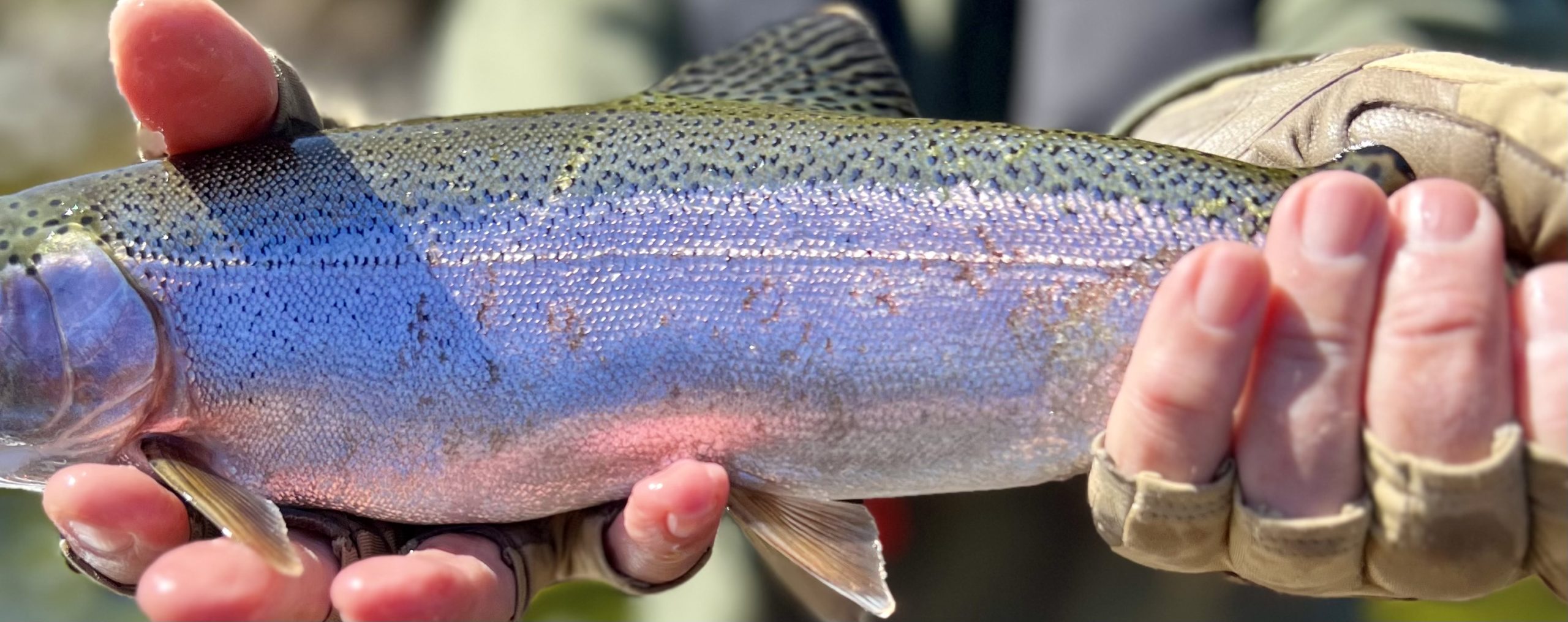20-25 February 2023
Fishing for trout in New Zealand is unique because you fish by first spotting, “sighting,” the fish. Then you cast your fly in front of a specific fish the guide is watching and directing you to with specific directions!
All New Zealand trout have been introduced—Brown trout arrived in 1867 from British stock and Rainbow trout were imported mainly from California steelheads. Robert has heard that these Rainbows came from the Sonoma River.
As in 2004, we used the company The Best of New Zealand Flyfishing to reserve fishing guides on both the South and North Islands for two to three days at a time. Many of them are fully booked this year for the six-month season. The guides know the local waters and what might provide the best potential to see and catch fish. They drive you to a likely spot, which may be an hour away, may be on gravel roads, and spend eight hours at your side in the water. The guides provide a box lunch, the flies, and they spot the fish.
It takes a while for you to see that the smudge they point to is a 25–inch brown trout. They have honed their ability to spot these fish, even though the fish have evolved to camouflage themselves in their habitat. Robert believes that New Zealand guides have access to specialized Polaroid glasses that cut the glare of the water! Guides spot a fish, point it out to you, and then direct you to cast the fly to specific location—You see that patch of sandy area? I want you to cast the fly one and a half meters above it and one meter to the left. Oh! The fish is moving. Now cast ten feet to the right. Or See that yellow leaf floating by? Cast there! Your casts vary from ten feet in front (difficult to do) to fifty feet. The guide may instruct you to cast one foot to the right of your last cast and a wee bit longer. Trees hanging over the water may obstruct the cosy pool where the trout is hanging out. Depending on the location, weather, an insect hatch, and the mood of the fish, you use dry flies, nymphs (which sink), or a combination. Some guides use indicators, a bright floating object on your line that visually alerts you when a fish is taking a nymph below the surface.
New Zealand Fish and Game posts signs for entry to streams, rivers, and lakes. If you see a vehicle parked there, you move on to the next access point. Many fishing spots are accessed across private land (the guides know the farmers). Sometimes there is a sign asking you to call the owner before entry because you might be interfering with livestock.
Besides improving your chances of catching fish, a benefit of having a guide is that you discover areas of the country you would not normally see. You might see a few Hobbits or filming locations of Lord of the Rings and Wolverine. The other benefit of the guides is that you learn about the culture and the locale on your forty-plus-minute drive to the day’s fishing spot when you swap stories with the guides. We pepper guides with questions about sheep, hay, the economy, history, and weather.
All our fishing is catch-and-release. No eating, although some guides may give us that option. The hooks are tiny—smaller than the fingernail on your little finger—and may or may not have barbs, so keeping a fish hooked as they squirm around is challenging. We take the fish out of the water just long enough for a quick photo.
We practiced casting before the trip by going several times to the big concrete casting ponds in Golden Gate Park (near the bison). Very helpful. Robert is already quite experienced and yet always is learning from each guide, and Bonnie has done a bit of fishing. She watched YouTube videos and improved every time we practiced. In the end she was doing accurate thirty-foot casts. We belong to the Golden Gate Angling and Casting Club at the casting ponds and enjoy the crowd of old guys who hang out at the club’s log cabin there and often wander over to give us casting tips.
We brought two big duffle bags full of fishing gear that had to be checked for possible contaminants when we arrived at Auckland airport. They are careful about protecting their streams from imported invaders. We brought nine-foot rods that come apart in sections to fit in a metal tube. Also in the duffles, waders, boots, heavy socks, broad-brimmed hats, polarized sunglasses, water-tight containers for phones, wading staffs, sunscreen, gloves with exposed fingertips, flies Robert has tied and will probably never use here, and much more. Trout see color, so some guides are insistent that clothes must be colors that blend into the scenery.
Queenstown
20-22 February 2023
Our Queenstown fishing guide was Henare Dewes. He is Māori and a man of many professions past and present—fishing guide, helicopter snow skiing guide, reiki practitioner, water filter promoter, bartender, and movie extra, among others. Visitors from Japan often recognize him on the street in Queenstown because of his major role in a travel documentary about New Zealand, and this is how he met his Japanese wife. He comes from a large family on the North Island and his ancestry includes a British great grandfather. Our three days of fishing with him gave us another view of New Zealand and its people. A very nice and thoughtful guy.
Robert spent the first day on a small river and a spring-fed creek. Saw fish—some very large—in the river, but they had no interest. He and Henare had a late lunch and waited beside a spring creek for a hatch that occurred mid afternoon. The creek had very large brown trout, but no takers. The next day, Bonnie joined and we went to Diamond Lake to sight fish along the shoreline. The brown trout would swim leisurely along the shoreline and in a set beat, going back and forth in search of food that may have blown against the edge. We had five or six strikes and landed one.
The next day, because of rain during the night, the rivers were not suitable to fish so Henare and Robert went back to the same lake and fished from the opposite end, this time in waders. They did well, landing three fish in the the 1.5, 2.5, and 3.5 pound range. It was a good day. After a late lunch, we drove up the canyon toward the mountains that were integral to many scenes in Lord of the Rings. Henare said that the owner made more off of the fees for filming than he did off his livestock, helping to retain his property.
This area is the hub of several treks that go into the surrounding bush (forest). People can go by themselves or with guides for several or many days. Huts along the route provide a sheltered place to sleep, shower, and cook. They have bunk beds too. We encountered a bus going out on one of the one-lane roads after it had dropped off a group of trampers (hikers). We saw them starting their journeys with backpacks lightly to fully loaded. Ages varied from mid twenties to seventies or even eighties.
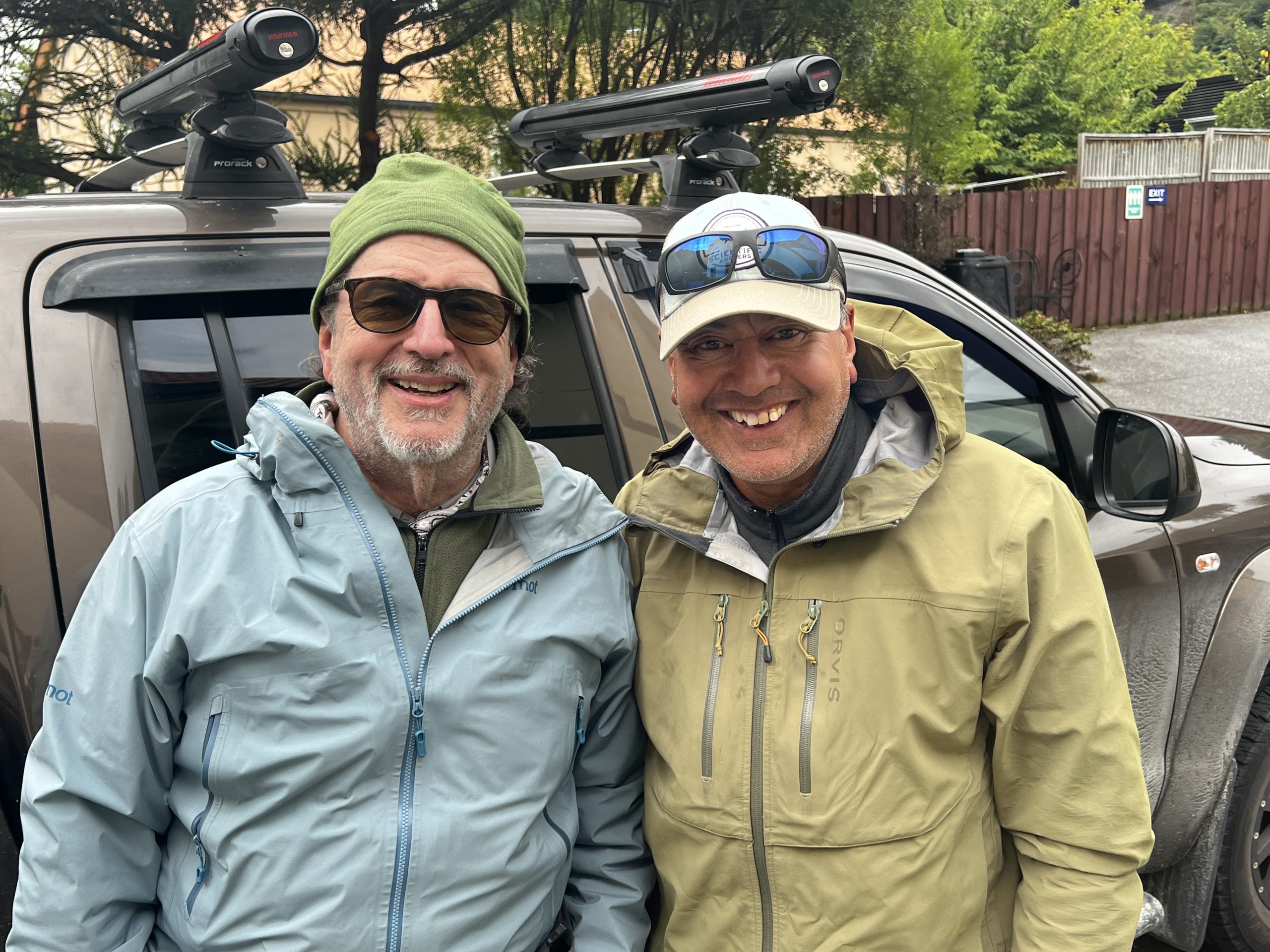
Mataura River



A Spring Creek


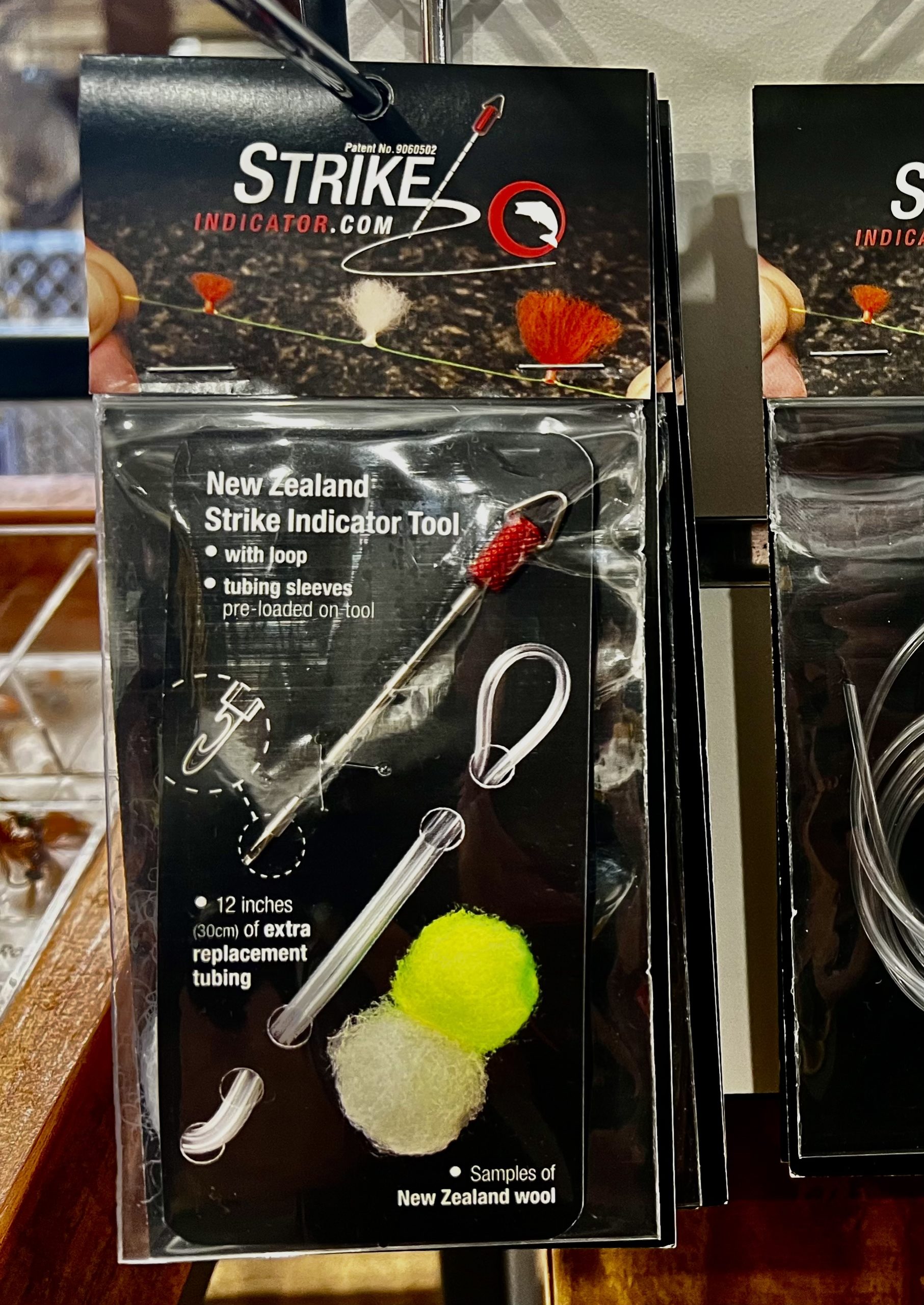
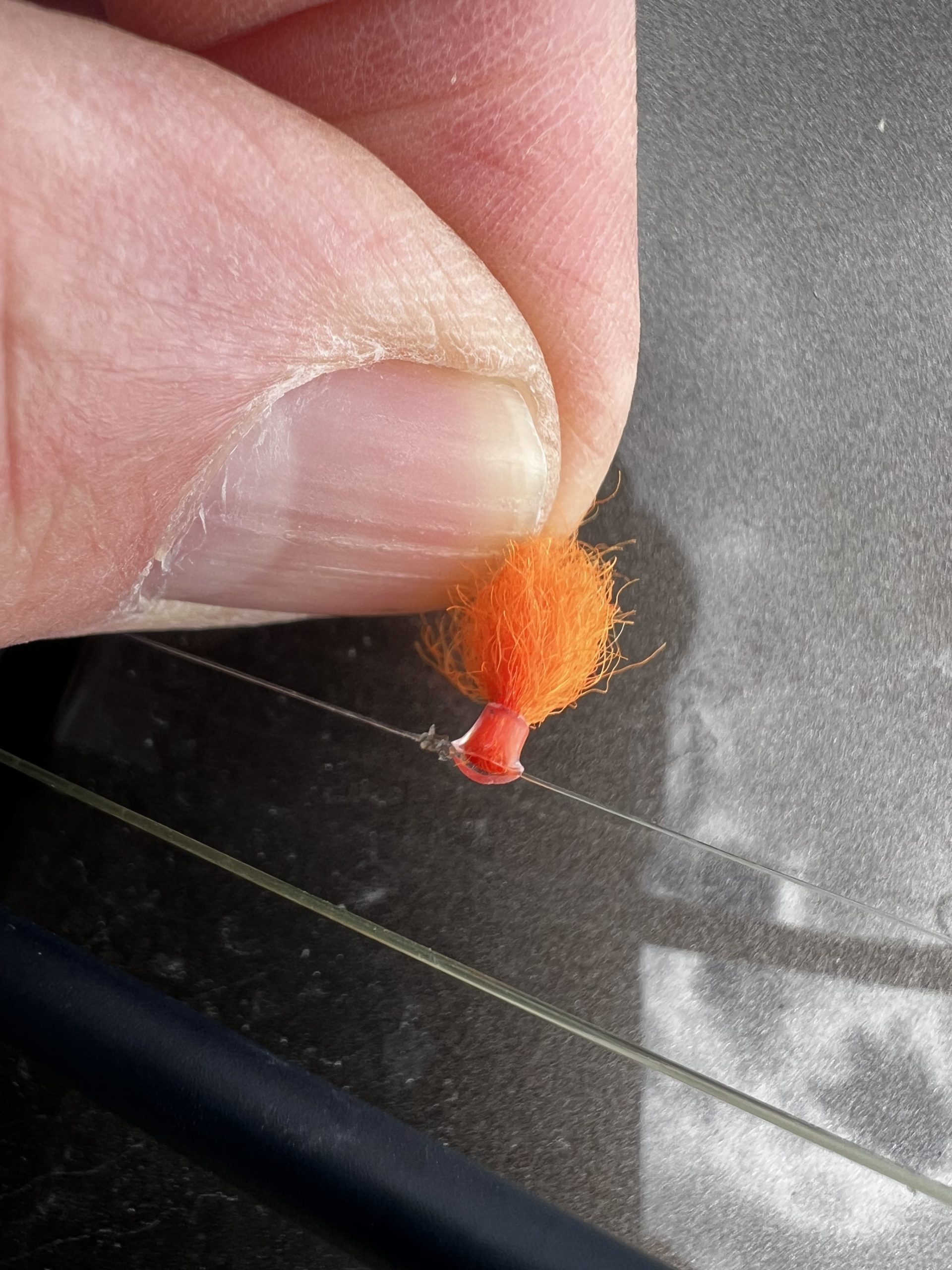

Diamond Lake












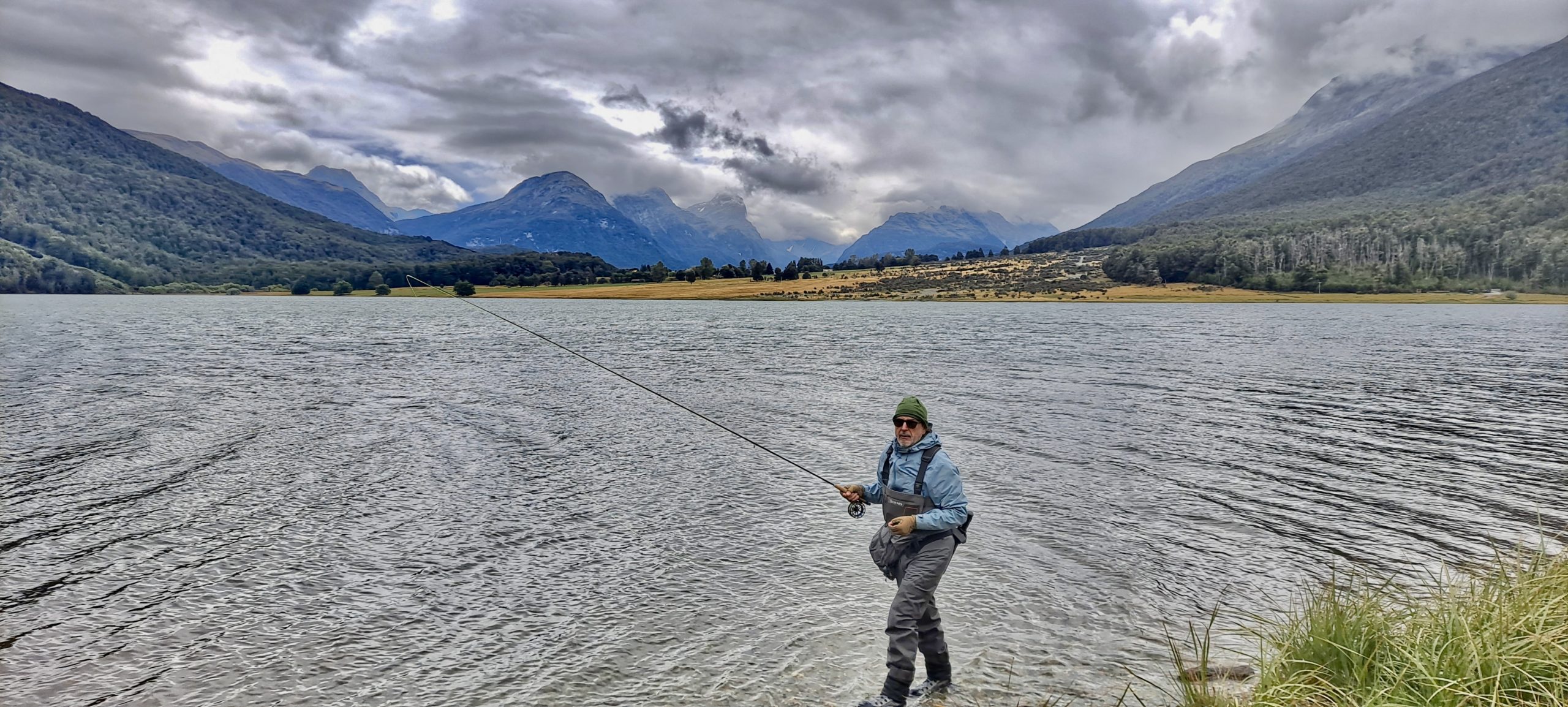

Scenery Nearby Diamond Lake




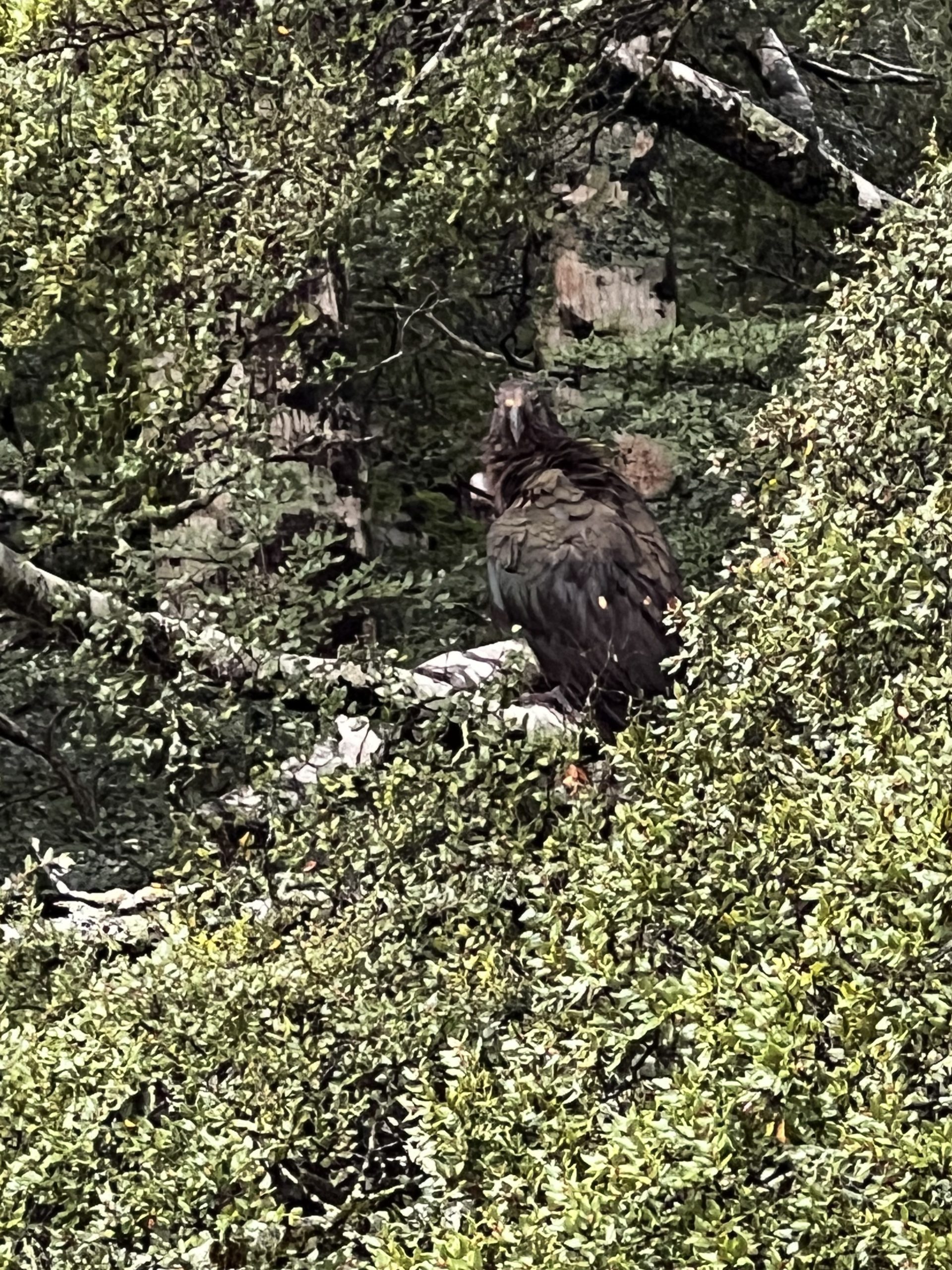


Te Anau
24-25 February 2023
Jet boat fishing! Our guide for two days was Ken Mitchell with Fishjet NZ. He is a true Kiwi and tested our comprehension of the Kiwi accent! We had to concentrate hard to understand what he was saying. He knows how to handle a jet boat while tying on flies. He can turn the jet boat on a Kiwi dime (if there is such a thing). When he is not guiding during the fishing season, he does pregnancy testing—on deer herds. In the past he would test more than 60,000 farmed deer in a six-month season. He had us fish with dries (ciacadas) and nymphs, some heavily weighted. One technique was to tie on a streamer-styled fly extended on an eighty-foot line that he zigzagged through the water. Very successful. Ken casually mentioned at the end of our two-day stint that one of his past clients was Harrison Ford along with his wife and son! They caught fish too.
We fished up and down the wide Waiau River, once emerging into Lake Manapouri for the fabulous views. Bonnie caught two large rainbows—20-inch and 18-inch. Robert caught a spectacular 24-inch brown that put up a big fight, and well as three other rainbows.
Jet boats are pretty neat. They work on pressured water coming through a spherical ball with an opening. Manipulating the ball determines the direction of the boat—forward, backward, to the side. They are very maneuverable. The beauty is that there are no propellers, so you can go through very shallow water. Pretty cool. Jet boats were invented by a Kiwi, Bill Hamilton, when he observed the water coming out of his garden hose. He never claimed to have invented the jet boat, saying that the honor goes to a gentleman named Archimedes, who lived many years ago. (We met him in Sicily.)
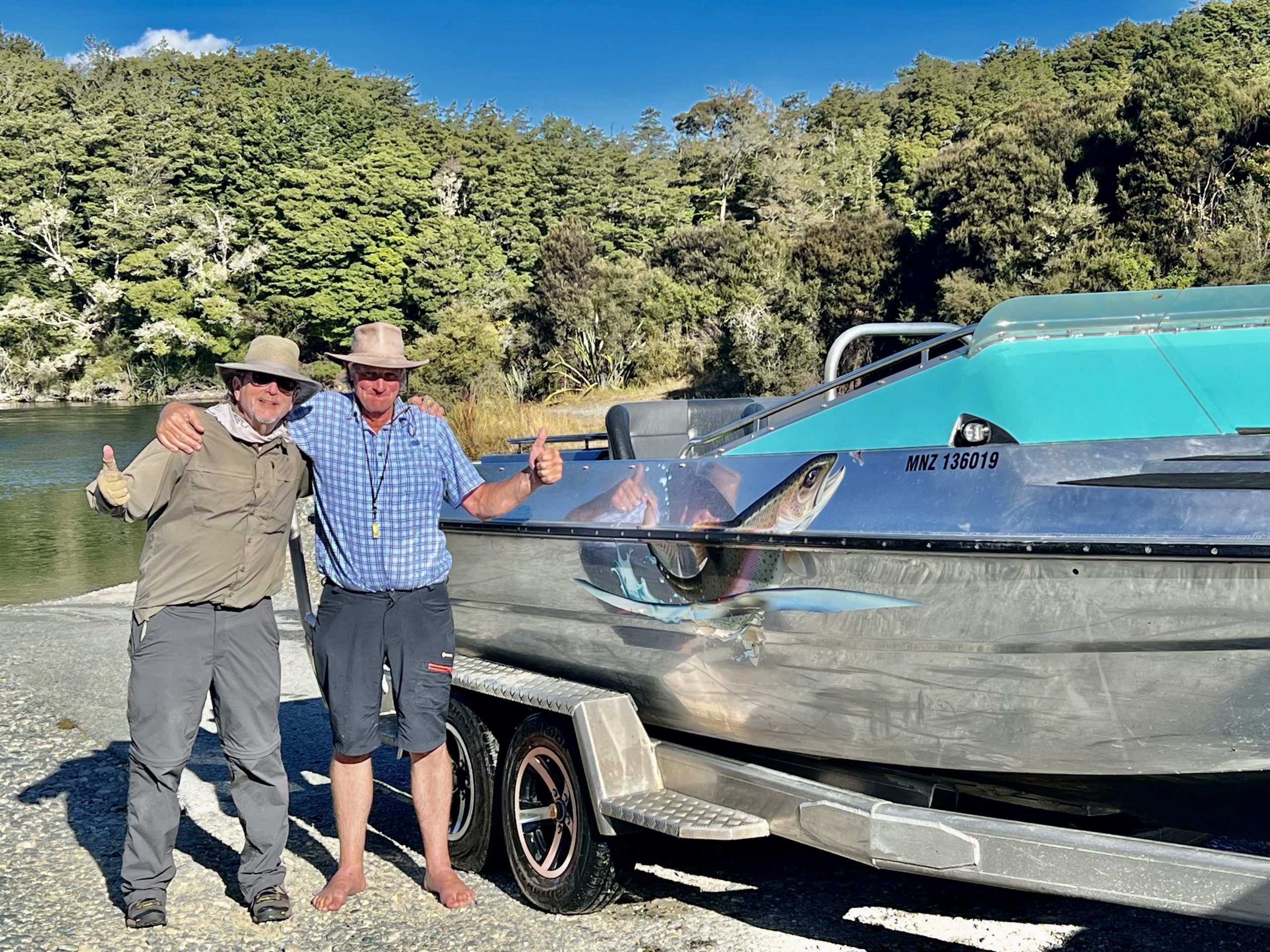


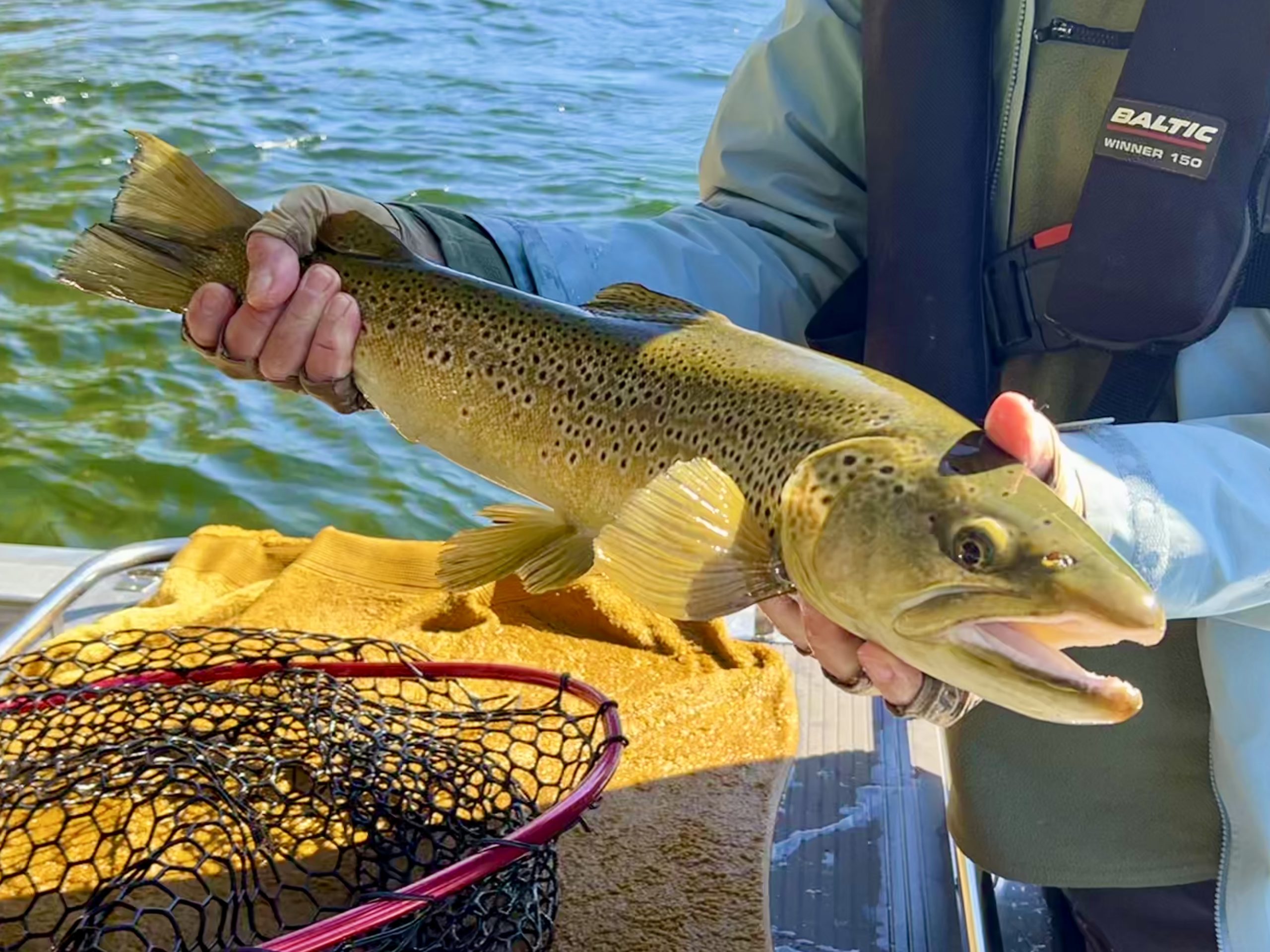











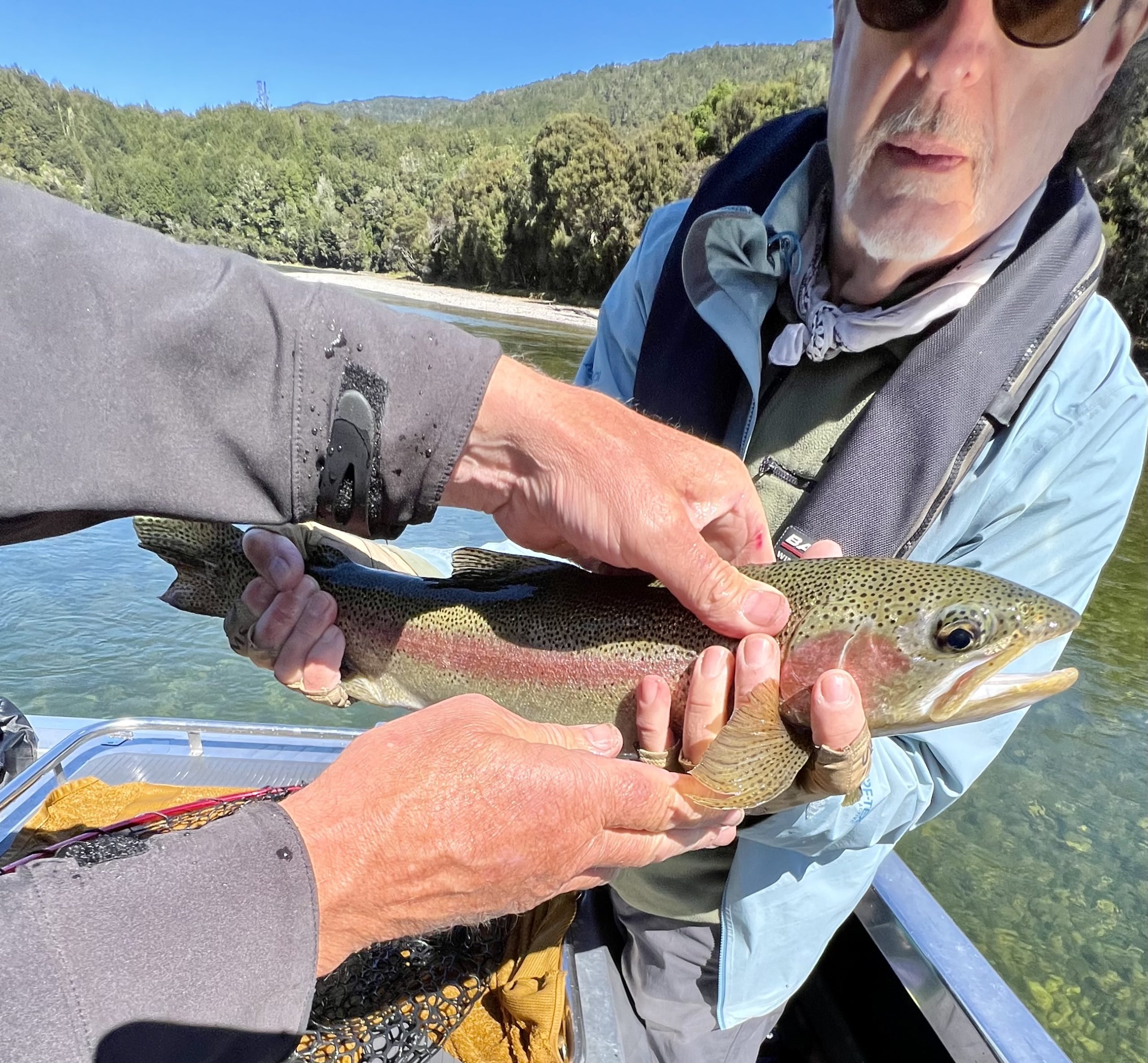






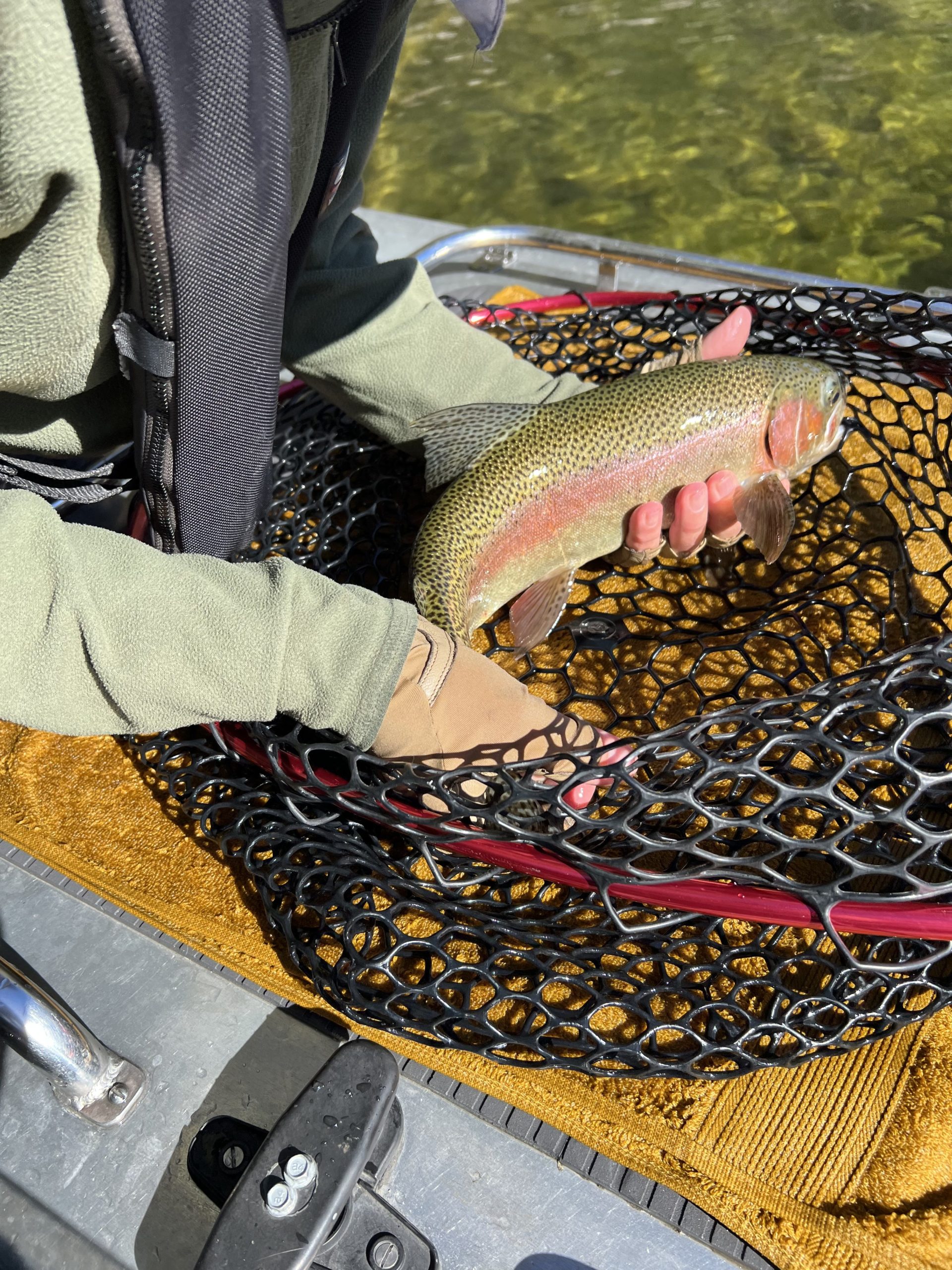
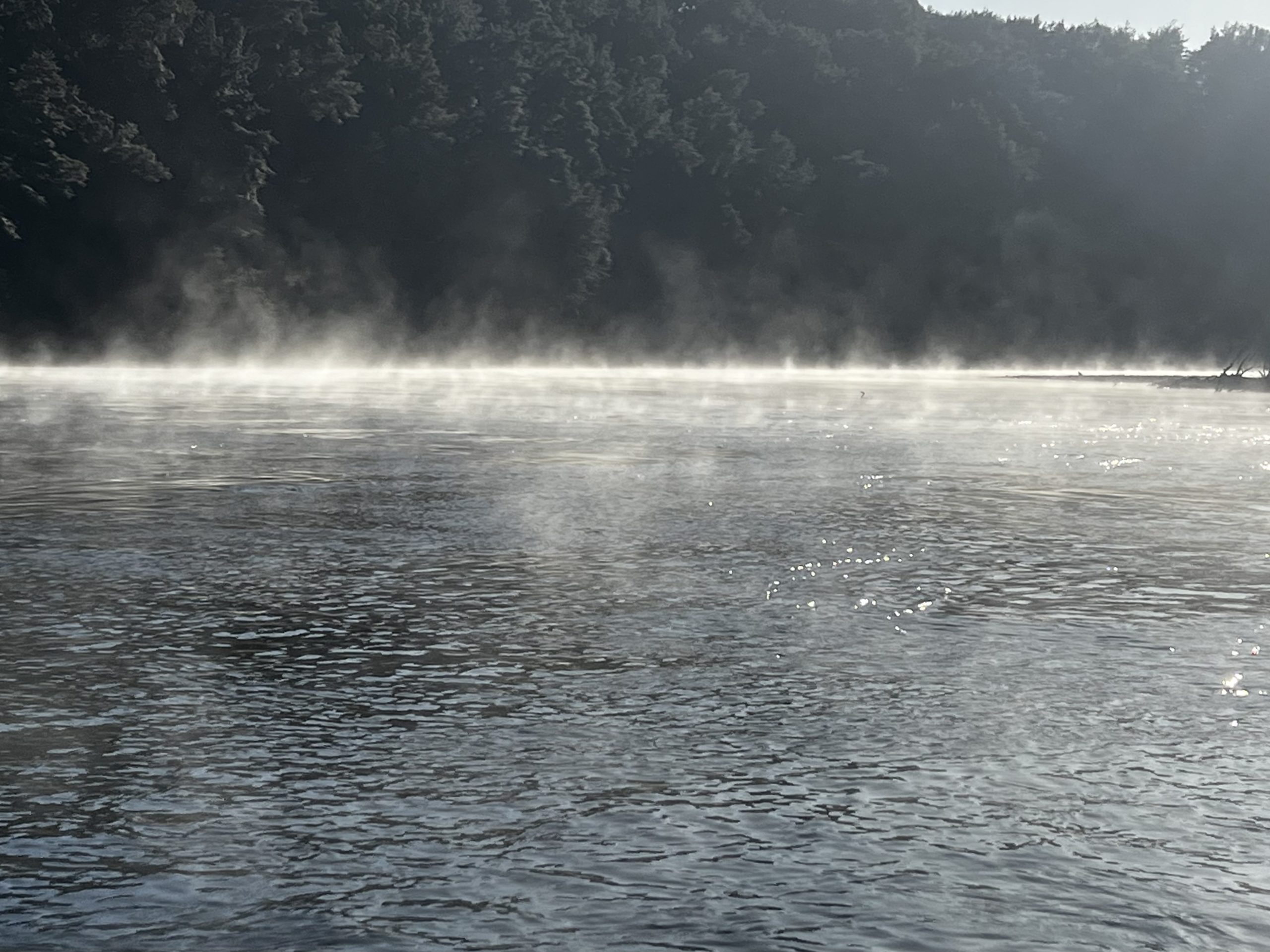

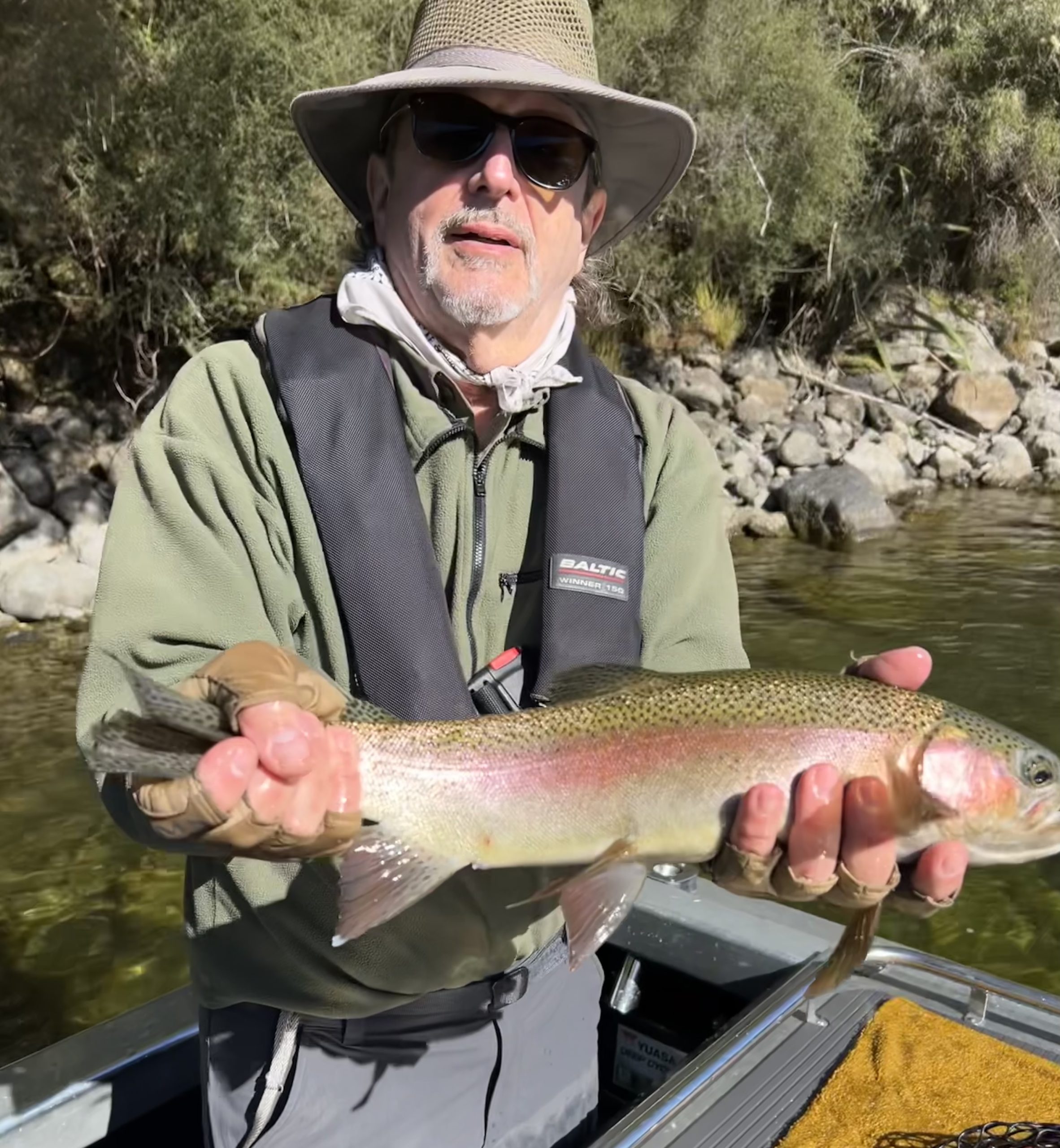






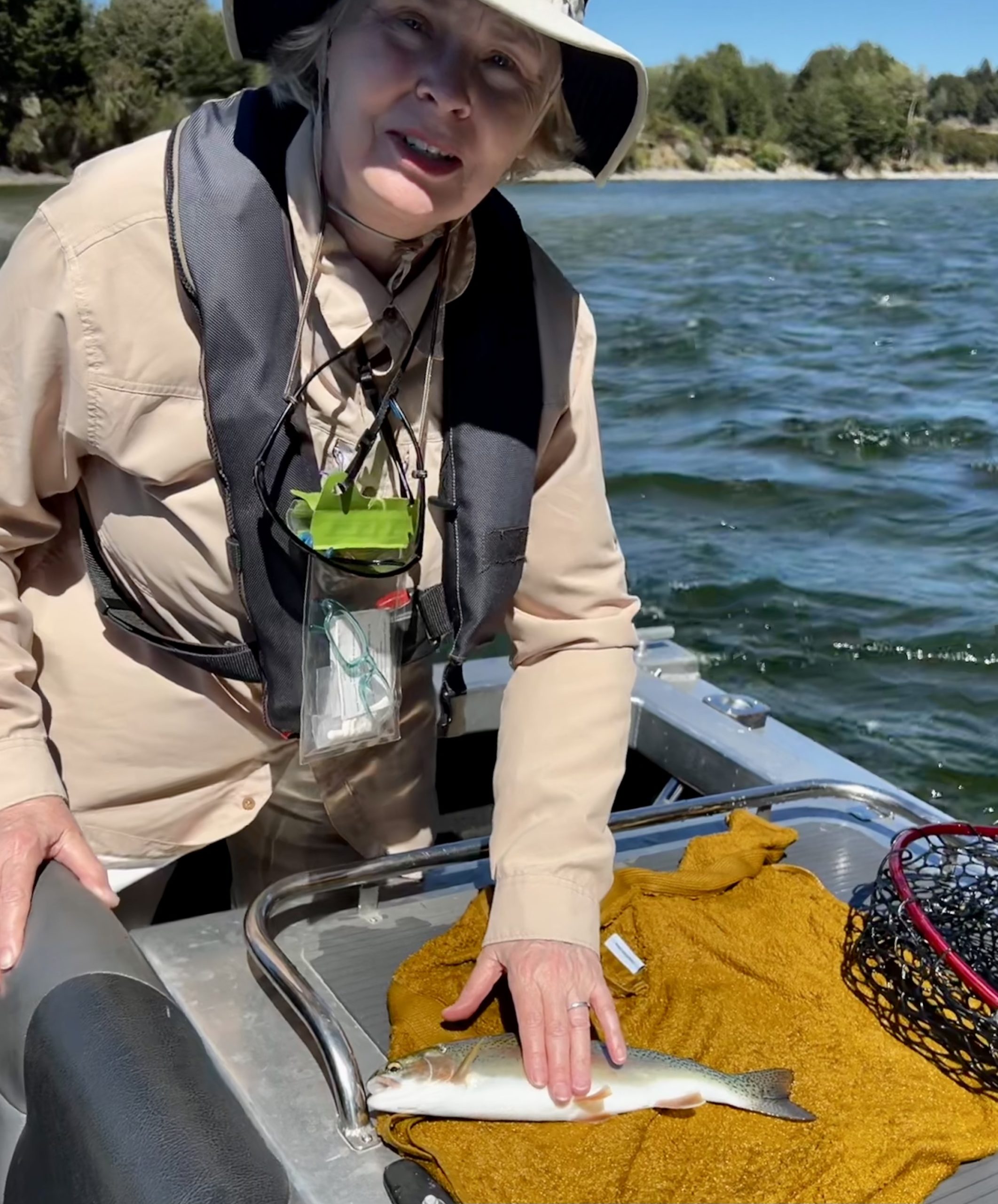


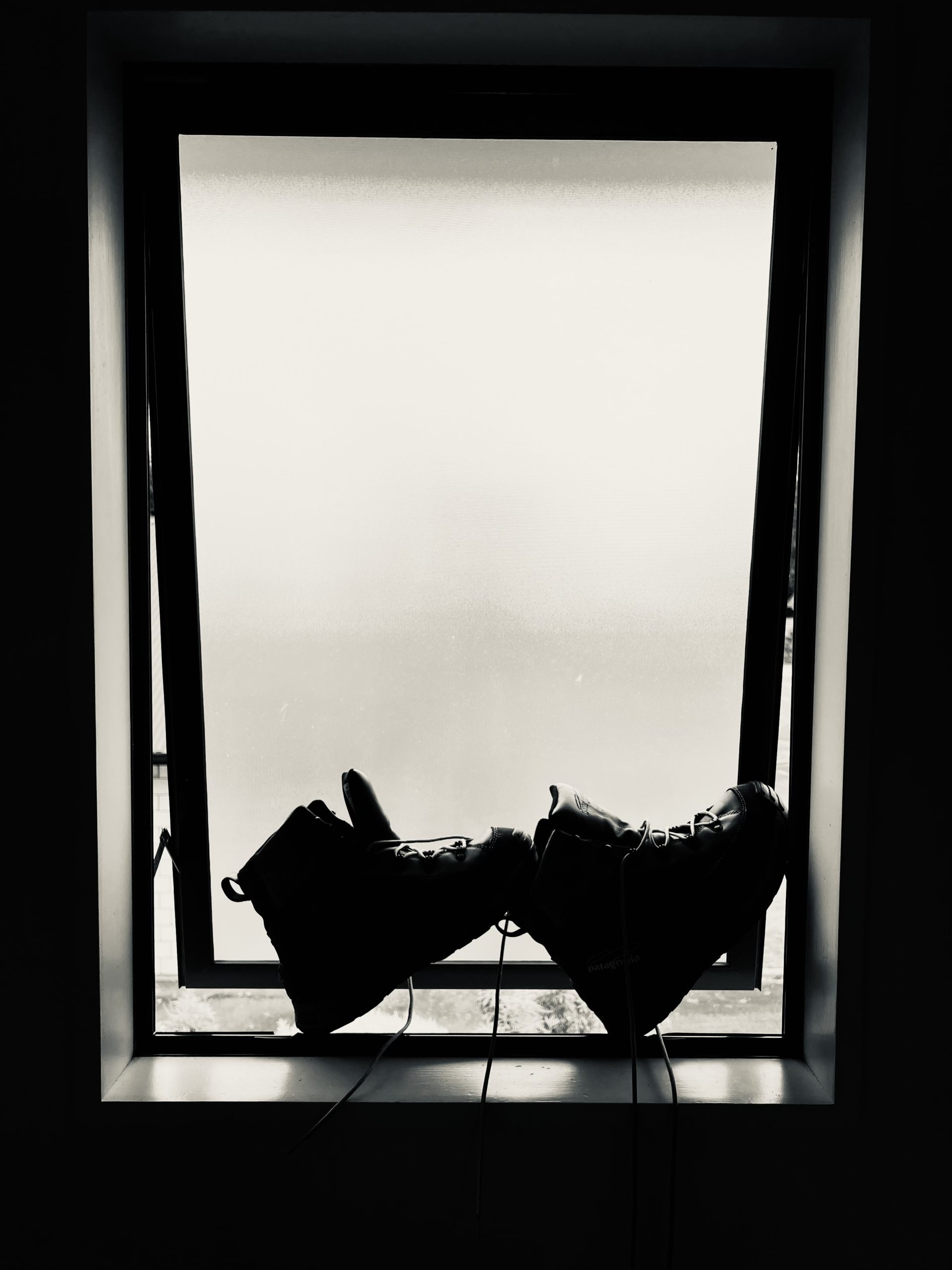
Next Fishing Spot—Gore and Twizel!
